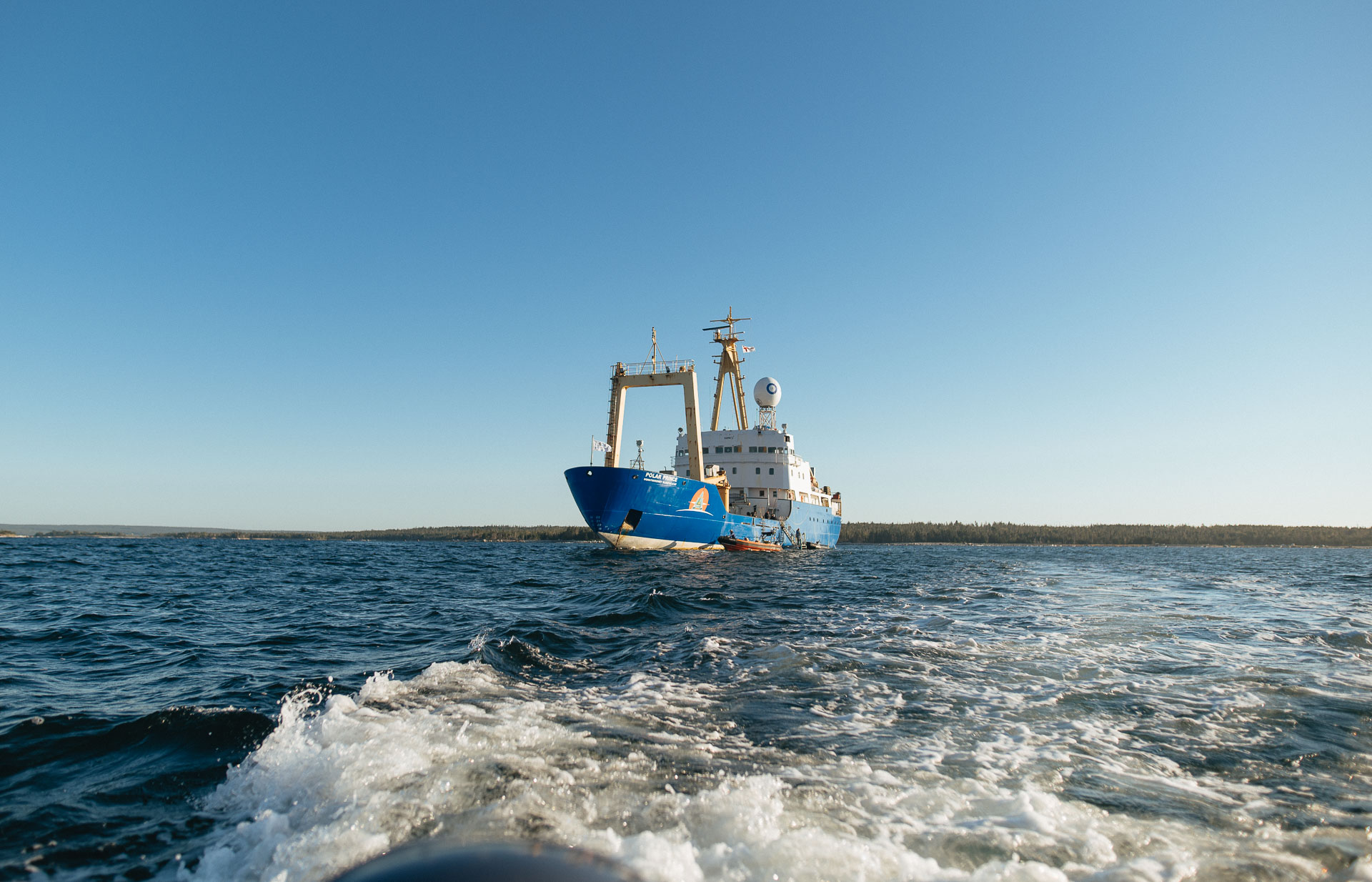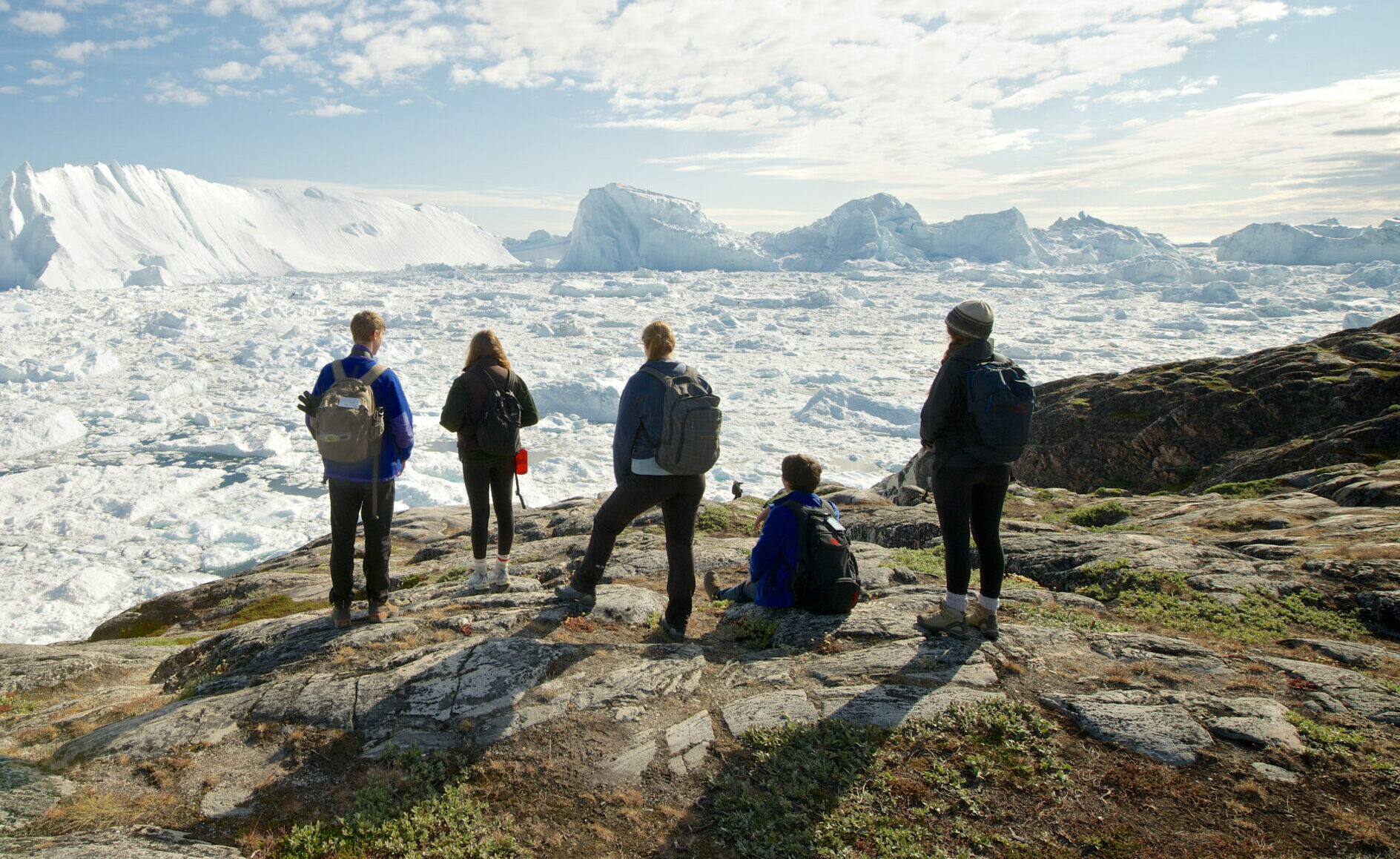Blue Futures Pathways Expedition: Update One
Iqaluit may not immediately conjure images of blue skies, green tundra, and roads lined by dwarf fireweed, but it’s what we were greeted with when we arrived in the capital of Nunavut this past Saturday. This was the starting point for this year’s Blue Futures Pathways expedition.

Our time in Iqaluit really began the next day with a visit to a dog team where we went on qamutiik, a traditional Inuit sled, rides and learned about how close this vital part of Inuit culture came to being extinguished in the 1960s and 70s. We also had a chance to help butcher a seal and feed it to the now-hungry dogs.
“It’s definitely different from doing, moose or deer, fish, [or] beaver.”
– Dolcy Meness, Kitigan Zibi.
We later travelled to the site of a former Hudson’s Bay outpost, which is now used by a local company called ArcticUAV. There we had the chance to see cutting-edge ROVs and UAVs up close and hear from Kirt Ejesiak, ActicUAV’s CEO, about how tools like those are helping build capacity for new kinds of work in the North.

That evening we met Nate Jewett and Zipporah Ungalaq, members of an Arctic Inspiration Prize-winning team tackling food security in Nunavut. In addition to lighting the qulliq, a traditional Inuit oil lamp, and singing a few traditional songs, we were treated to a feast of contemporarily prepared country food: seal meatballs, polar bear jalapeno poppers, caribou stew, walrus, and a medley of other unique foods harvested from Nunavut’s rich lands and waters.

The energy that had slowly been building over the previous few days came to a boil on Tuesday morning. The MV Polar Prince, our home for the next two weeks, had appeared in the waters of Koojesse Inlet overnight.
With everyone finally all together on the ship later that afternoon, we gathered in the hangar to introduce ourselves and reflect on the previous few days. Then, as if the Polar Prince itself wanted to contribute, its engines rattled to life. For some, it was their first time experiencing the deep, unfamiliar rumble. For everyone, it was a sign that the expedition was finally underway.

Life aboard the ship is rarely dull, as a few early risers found out early Wednesday morning. “There are dolphins outside,” exclaimed botanist Paul Sokoloff, who had just run in from the deck to deliver the news to the mess hall, which proceeded to clear out instantly. For the next fifteen minutes, dozens of Atlantic white-sided dolphins surrounded the ship as we all watched on in wonder.

Shortly after, we arrived in York Sound, 175 kilometres south of Iqaluit near the mouth of Frobisher Bay. Here, we were divided into teams to learn about introductory seafaring skills, scientific water sampling, and basic drone operations. By the afternoon it was onto storytelling and ROV construction workshops as the Polar Prince cruised further out of Frobisher Bay and into Hudson Strait.





